Text
Week 10: Digital Citizenship and Conflict
(Social Media Governance)

Digital citizenship, a building block of the Internet, refers to a “person who has the knowledge and skills to effectively use digital technologies to communicate with others, participate in society and create and consume digital content” (Digital Technologies Hub, 2021). Being a digital citizen means correctly and safely utilising all aspects of the internet, including social media, and despite largely beneficial and positive uses of social media, it has also become a facilitator of online bullying, hate speech, and gaslighting by users. Gaslighting, originating from the 1944 film Gaslight, describes behaviour that works to "psychologically manipulate a person in order to erode their sense of self and sanity” (Gleeson, 2018). Cambridge English Dictionary outlines it as “the action of tricking or controlling someone by making them believe things that are not true, especially by suggesting that they may be mentally ill” (Cambridge Dictionary, 2018).
Gaslighting has come to the forefront of social media and been indoctrinated into day-to-day conversation following the move of third wave and intersectional feminism onto platforms such as Instagram, Twitter, and Tumblr. The development and traction of online movements such as #MeToo and #TimesUp has allowed for other internet users to gaslight those involved in the movements, often using common vernacular and stereotypes to degrade others, particularly women; “crazy ex-girlfriend”, the “bitches be crazy” or “psycho bitch”, the “hysterical woman” (Gleeson, 2018).
The internet and the realm of social media has allowed people to not only interact with people they know on a personal level but with strangers, giving them all the more opportunity to bully, harass and gaslight others. Some social media platforms, such as Tumblr, also offer anonymity in their sites, which often manifests in a negative way. Manospheres are a direct result of this sense of privacy and obscurity that some platforms provide. The idea of the manosphere is summarised by Marwick and Caplan; “When feminists and female public figures experience harassment, it often originates from members of a loose online network known as the manosphere, a set of blogs, podcasts, and forums comprised of pickup artists, men’s rights activists, anti-feminists, and fringe groups. While the particular beliefs of these groups may differ, many participants have adopted a common language.” (Marwick, A & Caplan, R, 2018).
It will be interesting to observe how social media and the internet adapt and change in an attempt to prevent and counteract gaslighting, bullying, and harassment in the future.
Cambridge Dictionary, 2021. https://dictionary.cambridge.org/dictionary/english/gaslighting
Digital Technologies Hub, 2021. Digital Citizenship, Digital Technologies Hub. https://www.digitaltechnologieshub.edu.au/teachers/topics/digital-citizenship
Gleeson, J, 2018, Explainer: what does ‘gaslighting’ mean?, The Conversation, viewed 13 May 2021, https://theconversation.com/explainer-what-does-gaslighting-mean-107888
Marwick, A & Caplan, R, 2018, Drinking male tears: language, the manosphere, and networked harassment, Feminist Media Studies, vol. 18, no. 4, pp. 543-559.
1 note
·
View note
Text

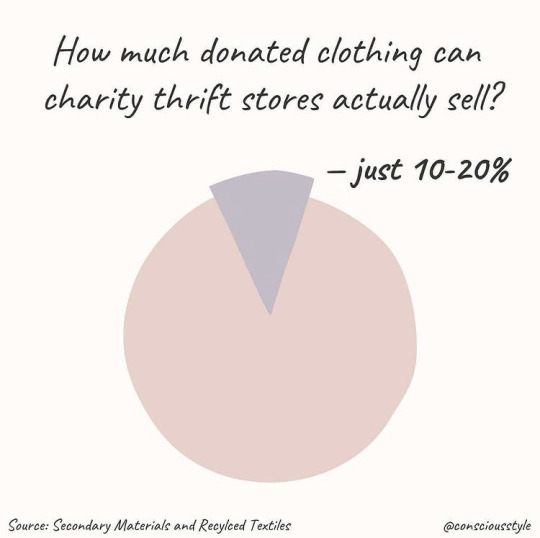


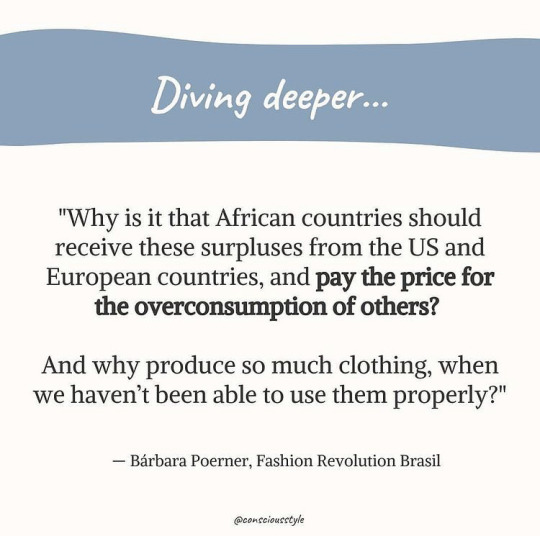
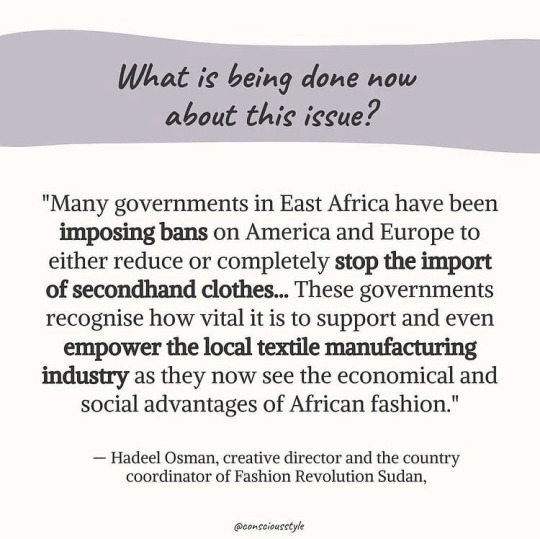


Try to be conscious of where your donations are going. Be proactive to give your garments their longest life and use this too to help you shop responsibly.
(Photo credit to consciousstyle on Instagram)
1K notes
·
View notes
Text
Week 9: Social Media Influencers and the Slow Fashion Movement

‘Fast fashion' is the name given to cheap, trendy clothing, often designed to replicate high fashion runway items at an affordable price. Whilst stylish, affordable clothes may seem appealing to many, unfortunately, many of these garments are produced unethically, through sweatshops, and child labour. ‘Slow fashion’ is a direct response to this, “The movement works towards creating an industry that benefits the planet and all people” (Stanton, 2020).
In a world moving towards a more sustainable future, with climate change and eco-friendly alternatives at the forefront of politics and society, Fletcher (2008) describes the four guiding principles to define fashion lines and brands as ‘sustainable.’
“Items produced must be child labour free across the entirety of the supply chain”
“Materials utilised within the production process should be less harming to the natural environment, recycled, up-cycled, and/or more durable. Thus, it portrays the opposite to the ‘throw away’ fashion attitude often associated with fast fashion.”
“The production process must be in an ethical and socially responsible manner, paying workers fair wages and, ideally, create jobs in the country of origin by producing locally. Sustainable fashion has a local focus thereby not only supporting the local community and creating jobs, but also reducing transportation millage and costs.”
“The creation of long-term relationships across the supply chain is vital within the process of producing sustainably, which allows the negotiation of fair prices and wages and developing a strong network that fosters the creation of sustainable fashion.”
Whilst slow fashion can be inaccessible for many, as ethical production and textiles drive up prices of products, slow fashion is ‘built on the essential concepts of sustainability values, ethical working conditions and decreasing environmental contaminants” (Chi et al 2021). A great majority of the time, fast fashion brands and social media influencers take advantage of the affordability of fast fashion and promote buying fast fashion to their followers. Slow fashion minimalises and attempts to counteract the impact of fast fashion, where “seventy-five percent of fashion supply chain material ends up in landfills” (Pulse of the Fashion Industry, 2019).
Chi, P.C., Owino, E., Jao, I., Marsh, V. and Kamuya, D., 2021. Considering the importance of context for ethical practice on reimbursement, compensation, and incentives for volunteers in human infection controlled studies. The American Journal of Bioethics, Vol.21:3, pp.40-42.
Fletcher, K. (2008). Sustainable Fashion and Textiles: Design Journeys. London: Earthscan.
Pulse of the Fashion Industry. 2019. Taking the Final Pulse of the Fashion Industry. Global Fashion Agenda. https://www.globalfashionagenda.com/report/pulse-2019-update/
Stanton, A. 2020, What does slow fashion actually mean?, The Good Trade, https://www.thegoodtrade.com/features/what-is-slow-fashionf
2 notes
·
View notes
Text
Week 8: Gaming Communities, Social Gaming and Live Streaming
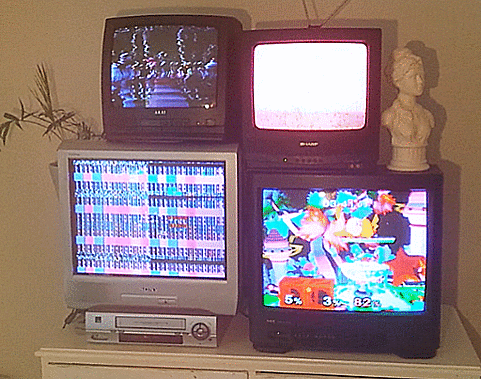
Gaming has seen some big changes recently, and as the world moves to digital technologies, Internet gaming with “multiplayer connections” (Taylor, 2018) has created “competitive spaces” (Taylor, 2018) for people to interact. In this bizarre time of covid lockdowns, social restrictions, and minimal social interactions, gaming has become a new form of community. The wide range and variations of both on and offline gaming gives users the ability to find a ‘niche’ within their gaming. These online games create a “virtual environment where people of all age, gender, different backgrounds, and profession can connect and interact with each other” (Frostling-Henningsson, 2009), and the social relationships formed through these technologies are an integral part of digital communities.
Not only does gaming bring people together and create communities through in-game chat and text-based communication, but the development of game streaming has become a “collision of the televisual, computer games, the internet, and computer-mediated communication” (Taylor, 2019). This development has birthed online communities and platforms such as Twitch, a live streaming service that focuses on video game streaming, have boomed as a result. The ability to not only watch gamers play, but interact with them whilst they play, has allowed for a new form of influencer and micro-celebrity. With Twitch's most popular user ‘Ninja’ having more than 12 million followers, it's clear that the gaming community is keen to interact with one another. Taylor describes play and gaming as “deeply connected to the things that matter and impact our lives.” (2018)
Gaming being integrated into the daily lives of many people, and this increased interest and demand in live streaming, has resulted in it becoming a full-time job for certain individuals, and popular live streamers have become influencers in their own way, much alike to Instagram or TikTok influencers.
Frostling-Henningsson, M. (2009) First-Person Shooter Games as a Way of Connecting to People: “Brothers in Blood”. CyberPsychology & Behavior 12(5),557-562
Taylor, TL. 2018, ‘Broadcasting ourselves’ (chapter 1), in Watch Me Play: Twitch and the Rise of Game Live Streaming, Princeton University Press, pp.1-23
0 notes
Text
Week 7: Digital Citizenship and Software Literacy
(Instagram Filters)
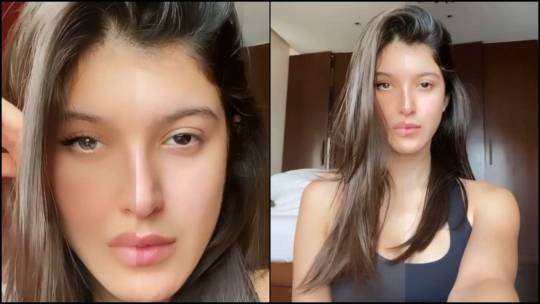
What used to be a fun way to alter the colours of your images, bring warmth to photos, and sharpen a blurry picture, is now a key contributor to the unrealistic beauty standards that social media platforms, especially image-based apps, continue to promote. Whilst crash diets, exercise, and cosmetic surgery are all advertised as means to achieve this ‘perfect appearance,’ it isn’t always enough. What the body cannot achieve, the image can through apps” (Coy-Dibley, 2016).
Instagram alone has over 1 billion monthly users worldwide (Dean, 2021), and with photo-sharing, stories, IGTV, and reels, the platform is so flooded with image and video-based content, all users do is look at one another.
Whilst each platform has its own unique and independent features, many of them share characteristics. Both Instagram and Snapchat allow users to apply a range of filters to both their posts and their stories. These filters range from silly games, face morphing, and text to photoshop-esq; with skin-smoothing, teeth-whitening, and face-thinning being at the top of the priority list. These filters often are so extreme, the filtered image looks completely different from the unfiltered (shown below).
The #filterdrop campaign was started in 2020 as a response to these highly transfiguring filters, and as a response, Instagram now displays whether images in posts, stories or reels are filtered or not in an attempt at transparency. Following this campaign, in February 2021, the United Kingdom introduced legislation that banned influencers on Instagram from using such misleading filters when advertising cosmetics, skincare, and other products.
Using filters to promote ourselves as “perfect” people in an attempt to try and outcompete others who are all trying to meet the same unrealistic beauty standards as we are does nothing but harm.
Coy-Dibley, I. 2016. “Digitised Dysmorphia” of the Female Body: The Re/Disfigurement of the Image. Palgrave Communications.
Dean, B. 2021. Instagram Demographic Statistics: How Many People Use Instagram in 2021? Backlinko. https://backlinko.com/instagram-users
0 notes
Text
Week 6: Digital Citizenship and Health Education
(Body Modification on Social Media)

In the age of social media influencers, and ‘self-made’ Instagram celebrities, the continuing unrealistic beauty standards set for women worldwide are increasingly worse. “The Internet and social media have become ubiquitous in the world of plastic surgery,” (Dorfman et al. 2018) specifically image-based platforms, such as Instagram and Snapchat which are often used to encourage and provide information regarding cosmetic surgery and initiate contact with plastic surgeons.
Every day, more and more people are engaging with social media, with nearly 3 and a half billion users worldwide, across the seven major platforms; Facebook, Twitter, LinkedIn, Instagram, Snapchat, Pinterest, and Reddit, there is arguably no better way to advertise than with social media. This new age of social media has meant the birth of a never-ending cycle of trends, whether its fashion, hair colour, or physicality, its difficult to keep up appearances on social media, resulting in “42 percent of surgeons report[ing] that their patients are seeking aesthetic surgery to improve their appearance on Instagram, Snapchat, Facebook, and other social media channels” (Dorfman et al. 2018).
The creation of micro-celebrities and influencers through social media increases this demand for unrealistic beauty standards and with celebrities such as the Kardashian family, frequently called ‘the most beautiful family on Earth,’ promoting beauty standards unachievable without at least some form of cosmetic procedure, its not difficult to understand that in Australia alone, over 200 thousand cosmetic procedures are conducted each year (Chan, G. 2020).
Being a digital citizen means having the ability to effectively utilise social media, technology, and the internet safely and smartly, and being able to discern that these "unrealistic beauty standards" promoted by social media influencers and micro-celebrities are just that; unrealistic. Using cosmetic surgery to promote “perfect” people not only affects others but affects how we see ourselves.
Dorfman, RG, Vaca, EE, Mahmood, E, Fine NA & Schierle, CF. 2018. Plastic Surgery-Related Hashtag Utilization on Instagram: Implications for Education and Marketing, Aesthetic Surgery Journal, Vol.38:3, pp332–338
Chan, G. 2020. Cosmetic Surgery Statistics Australia & Around the World, The Victorian Cosmetic Institute. https://www.thevictoriancosmeticinstitute.com.au/2020/01/cosmetic-surgery-statistics-australia-around-the-world/#:~:text=And%20despite%20worldwide%20acceptance%20of,percent%20increase%20(via%20ASPS).
0 notes
Text
Week 5: Digital Citizenship
(Hashtag Publics, Political Engagement & Activism)

Digital citizenship is a key feature of modern society, the ability to appropriately utilise technology and social media, and engage with issues such as government, society, politics, and current affairs using appropriate digital and communication skills is required to be an active part of the world we live in today. Digital Citizenship is defined as “three aspects of participation in society online: economic opportunity, democratic participation, and inclusion in prevailing forms of communication” (Mossberger et al. 2008).
With over 3 and a half billion active social media users worldwide (Tankovska, 2021), digital literacy is essential. Hashtags are a key aspect of social media, and the internet in general, giving users the ability to tag things and section them into groups to be easily sorted through and found by others allows for connectedness between social media users, even if they don’t ‘follow’ each other.
Hashtags are often used for political engagement, and social media activism, as they allow all users to engage with them and post their own thoughts or images into the hashtag. #BLM and #MeToo have been some of the most noted hashtag campaigns on social media. Social media and digital citizenship also allows for public figures, such as notable celebrities and politicians to connect with their audience in a more personalised, individual way.
Hashtag campaigns and social media activism have allowed for large issues, such as police brutality, human rights, and sexual assault to come to the forefront of politics, and facilitate actual political change to occur. Vromen discusses how these “online campaigning organisations are challenging the line between traditional notions of ideology in activist politics” (Vromen, 2017). These digital campaigns are now the primary means of political activism for many, and with over half of the global population using social media, it is the most accessible way to create widespread change.
Mossberger, K., Tolbert, C.J. and McNeal, R.S., 2007. Digital citizenship: The Internet, society, and participation. MIt Press.
Tankovska, H. 2021. Number of global social network users 2017-2025 Statistica https://www.statista.com/statistics/278414/number-of-worldwide-social-network-users/
Vromen, A. 2017. Intro: Digital Citizenship and Political Engagement The Challenge from Online Campaigning and Advocacy Organisations London: Palgrave Macmillan
0 notes
Text
Week 4: Digital Community and Fandom
(Reality TV Case Study)

Reality TV, one of the genres at the forefront of digital entertainment today, acts as “a dominant form of television programming for the last 20 years although many media scholars look further back to the 1970s, 1950s and earlier for its history,” (Milne, 2021).
Reality Television, especially in Australia is key to entertainment. Ranging from talent shows such as The Voice, to renovation and home improvement shows such as The Block, dating shows such as The Bachelor, cooking based shows such as Masterchef, and biopic style shows such as Keeping Up with the Kardashians, reality TV is the second most-watched TV genre, after news programming, with 41 percent of Australians watching reality television programs per week (Morgan, 2019).
Reality television, I believe, is so popular as it gives a sense of familiarity to viewers; shows ordinary people experiencing extraordinary things, and therefore is ‘relatable’ to audiences. However, as a reflection of ordinary people, the genre is often controversial as it allows people to enact or share their political, religious or social beliefs to a nation or world-wide audience.
Graham and Hajru suggest that in spaces associated to reality TV “many of the conversations have a political dimension, … discussions dealing with everything from health and the body to politicians and government” (Graham & Hajru, 2011). Allowing for the public to discuss their political opinions at such a large scale, at a time where political discussion is experiencing “decentralisation” (Graham & Hajru, 2011), reality television can be seen as an important forum for these conversations to occur.
These political discussions which are facilitated by reality TV also create and allow for digital communities to be formed. Social media platforms, specifically Reddit, Facebook, and Instagram often have dedicated pages for reality television, and often for each specific program, where audience members and fans can discuss each episode, and continue conversations hosted on the show, or reference issues raised during the program.
Through these “triggers” Graham & Hajru, 2011), reality television creates digital communities, where political and social discussion is facilitated for the general public. Allowing ordinary, everyday people to share their opinions to a large scale audience breeds political diversity and greater expression for the public.
Graham, T & Hajru, A. 2011. Reality TV as a trigger of everyday political talk in the net-based public sphere. European Journal of Communication. Vol.28:1 pp.18-32
Milne, E. 2021. Week 4: Digital Community and Fandom: Reality TV Case Study (Powerpoint Slides) Swinburne University of Technology.
Morgan, R. 2019. News and Reality TV are the most popular TV genres. Roy Morgan
http://www.roymorgan.com/findings/7969-top-tv-genres-december-2018-201905060240
0 notes
Text
Week 3: Digital Communities and Blogging
(Social Media and Tumblr Feminism)

Social media platforms, particularly image-sharing based sites such as Instagram and Snapchat, have long been criticised for inspiring negative body issues and insecurity within users. The promotion of unrealistic beauty standards by celebrities and social media influencers, often only achieved through severe body modification, cosmetic surgery and photoshop, causes negative self-esteem and body image issues for users. A study conducted by the Florida House Experience uncovered that 87% of women and 65% of men compare their bodies to images they consume on social and traditional media, and approximately 44% of these men and women do so unfavorably. (Blackford, 2020).
However, in the age of social media activism and political involvement, “Social networks and interpersonal ties are critical to social movements” (Crossley, 2015). Historically, women in western societies have been oppressed and shamed for showing their body and ‘exposing’ themselves in public, or to people other than their families, but in the age of social media, many view this as a way of ‘taking back’ female bodies, controlling what we share, see and post on social media profiles.
Tumblr, a micro-blogging platform launched in 2007, has become in some ways, a “black-hole of feminism” (Keller, 2019). The anonymity of the site means that many users feel comfortable discussing their experiences of sexism, and their opinions of feminism, as a “safer” option when compared to other social media platforms such as Twitter (Keller, 2019). Tumblr feminism gained popularity as it aligns with intersectional feminism, and involves discussions regarding rape culture, and LGBTQ+ rights in ways which traditionally, other platforms do not due to the privacy the platform provides.
Blackford, M. 2020. “Body Image and Social Media Questionnaire” Florida House Experience: Health. https://fherehab.com/news/bodypositive/
Crossley, A.D., 2015. Facebook feminism: Social media, blogs, and new technologies of contemporary US feminism. Mobilization: An International Quarterly, 20(2), pp.253-268.
Keller, J. 2019. “Oh, She’s a Tumblr Feminist”: Exploring the Platform Vernacular of Girls’ Social Media Feminisms.” Social Media + Society. Vol.5; Issue.3.
0 notes
Text
HOW DOES TUMBLR FUNCTION AS A DIGITAL COMMUNITY?
Tumblr, like all social media platforms and sites, allows for people to connect, and forms a bridge between countries, continents, and communities, allowing for global communication. Bruns and Highfield argue that traditional public sphere now consists of micro-public or communities. (2015) Social media as a whole can be considered a digital community within the public sphere, with many different sub-communities within it.
Tumblr, as in independent social media sight, focuses on ‘blog’ type posts, and can be considered as a microblogging platform which allows users to find there specific niche and connect with likeminded individuals by utilising key features of hashtags, ‘ask’ and ‘reblog’ in order to group their own content with that of similar Tumblr accounts (McCracken, 2017)
However, whilst Tumblr functions fundamentally the same as all other social media platforms, by allowing users to connect - arguably the key function of social media as a whole, Tumblr differs from other platforms such as Facebook and Instagram through its ability to keep users anonymous. Where Facebook in particular, and often Instagram, encourage users to employ their legal name in order to help them connect with people they know, Tumblrs use of anonymity is perhaps what draws people to the platform initially.
This anonymity gives people the sense of freedom to post whatever they like on their own blog, and to ‘reblog’ and ‘like’ others content. This “freedom of speech” allotment which Tumblr gives to its users through anonymity is largely unavailable on social media platforms where identification is required. People can identify with groups that they often wouldn’t, such as LGBTQ+ and political groups, for which they might fear to publicly associate with. “Tumblr’s affordances, [have] allowed for the platform to become especially popular with feminists, queers, trans people, and other marginalised youth who are looking for privacy, community, support, and respect online”. (Renninger, 2015)
A combination of its policies, which allow users to connect with topics they are most interested in safely and anonymously, and the manner in which it functions as a social media and micro-blogging platform have allowed for Tumblr to become a digital community which many people enjoy and use daily.
References
Bruns, A. and Highfield, T., 2015. Social media and the public sphere. The Routledge companion to social media and politics, p.56.
McCracken, A., 2017. Tumblr youth subcultures and media engagement. Cinema Journal, 57(1), pp.151-161.
Renninger, B.J., 2015. “Where I can be myself… where I can speak my mind”: Networked counterpublics in a polymedia environment. New media & society, 17(9), pp.1513-1529.
1 note
·
View note